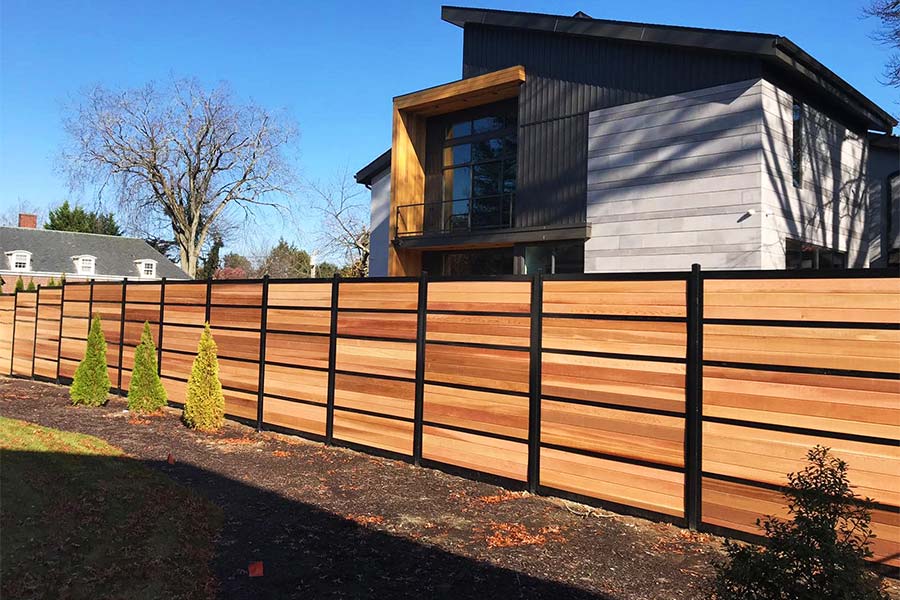All Categories
Featured

As sustainability ends up being a top priority for organizations and home owners alike, the demand for eco-friendly items, including fencing products, has actually increased. Traditional secure fencing options such as timber, metal, and vinyl can have unfavorable environmental effects, yet there are now a number of eco-conscious options to think about. Selecting environment-friendly secure fencing materials not only helps in reducing your carbon impact but additionally adds to an extra all-natural and sustainable setting.
- Bamboo Fence. Bamboo is one of the most environmentally friendly fencing alternatives available. Unlike traditional hardwoods, bamboo can be collected in a few years and grows back quickly, making it a lasting choice for fence.
Perks: Bamboo is fast-growing, light-weight, and sustainable. It needs less fertilizers and chemicals compared to other plants, making it a low-maintenance choice. Factors to consider: While bamboo is long lasting, it might need regular upkeep to shield it from weathering and all-natural wear. It can additionally be susceptible to fracturing in colder environments. 2. Recycled Products. Fences made from recycled products are ending up being increasingly prominent as an environment-friendly choice. These fences are made from post-consumer plastic, reclaimed timber, and other recycled materials, keeping waste out of garbage dumps. Making use of recycled materials decreases the need for brand-new raw sources, lessening ecological degradation.

Conveniences: These fences help in reducing waste and save all-natural resources. They are additionally commonly low-maintenance and long-lasting. Considerations: While recycled fences can be sturdy, the visual appeals might not always match conventional fence options. Lots of styles are currently readily available that mimic the look of wood or rock. 3. Compound Fencing. Compound fence is made from a combination of recycled wood fibers and plastic, offering the appearance of timber without the environmental influence. Several composite fencings are made from recycled content, further boosting their eco-friendly status. These fencings are lasting, require marginal upkeep, and do not require to be treated with hazardous chemicals like conventional wood fences.
Advantages: Compound fences are durable, immune to rot, and call for little maintenance. They likewise offer a similar aesthetic to timber without deforestation issues. Considerations: While they are low-maintenance, composite fencings may be a lot more expensive than typical wood or vinyl options. The production process can additionally be energy-intensive. 4. Cedar and Redwood Secure Fencing. Cedar and redwood are all-natural wood products that are commonly taken into consideration more eco-friendly compared to various other hardwoods. These sorts of wood are naturally immune to decay, insects, and wetness, which lowers the demand for chemical treatments. In addition, these trees are grown in lasting forests, ensuring that they are collected properly.
Advantages: Cedar and redwood are both normally beautiful and resilient materials. They supply natural resistance to insects and rot, which helps reduce the need for chemical treatments. Factors to consider: These woods can be extra pricey than other choices. They also require periodic maintenance, such as discoloring or securing, to ensure durability. 5. Living Fences (Hedges and Shrubs) Living fencings, made from hedges, trees, or bushes, are a green alternative that likewise supplies all-natural privacy and visual allure. Plants such as privet, boxwood, bamboo, and arborvitae are typically used for creating thick, green fences. These living barriers aid with noise decrease, boost air high quality, and give habitat for regional wildlife.
Advantages: Living fencings advertise biodiversity, boost air high quality, and boost the visual allure of your property. They additionally take in co2 and add to a greener environment. Considerations: Living fences call for upkeep, such as pruning and watering, to guarantee they grow effectively. They may not provide the same degree of protection as conventional fencing materials. 6. Stone and Reclaimed Block Fence. Stone and reclaimed brick fencings are another environment-friendly option. These products are sturdy, call for very little upkeep, and have a long life expectancy. When reclaimed from old structures or frameworks, they assist lower the requirement for new materials and protect against waste from entering garbage dumps.
Conveniences: Rock and brick are resilient, weather-resistant, and give a classic, traditional visual. Recovered materials additionally have a marginal environmental footprint. Considerations: The installation of rock and brick fences can be labor-intensive, and the products may be extra expensive than various other options. However, the long-term longevity and reduced upkeep costs can make them a worthwhile financial investment. Final thought. Picking an eco-friendly fencing material is a clever method to minimize your ecological effect while improving your property's personal privacy and aesthetic allure. Bamboo, recycled products, composite fencing, and living fences all provide lasting choices that lower waste, conserve sources, and advertise a greener way of living.
By picking one of these environmentally friendly secure fencing options, you add to the defense of the environment while creating a beautiful, useful outdoor room. The best product will certainly depend on your preferences, climate, and the degree of maintenance you agree to give, but remainder guaranteed that there are various eco-conscious selections that straighten with your lasting way of living.
Latest Posts
Unlock WyHy Federal Credit Union – High Rewards for Your Financial Goals
Published May 24, 25
1 min read
Shield Your Home with Top Quality Residential Roofing
Published May 23, 25
1 min read
Check Out Montclare Auto Repair’s Most Popular Car Care Solutions and Why Drivers Trust Them
Published May 23, 25
1 min read
More
Latest Posts
Unlock WyHy Federal Credit Union – High Rewards for Your Financial Goals
Published May 24, 25
1 min read
Shield Your Home with Top Quality Residential Roofing
Published May 23, 25
1 min read
Check Out Montclare Auto Repair’s Most Popular Car Care Solutions and Why Drivers Trust Them
Published May 23, 25
1 min read